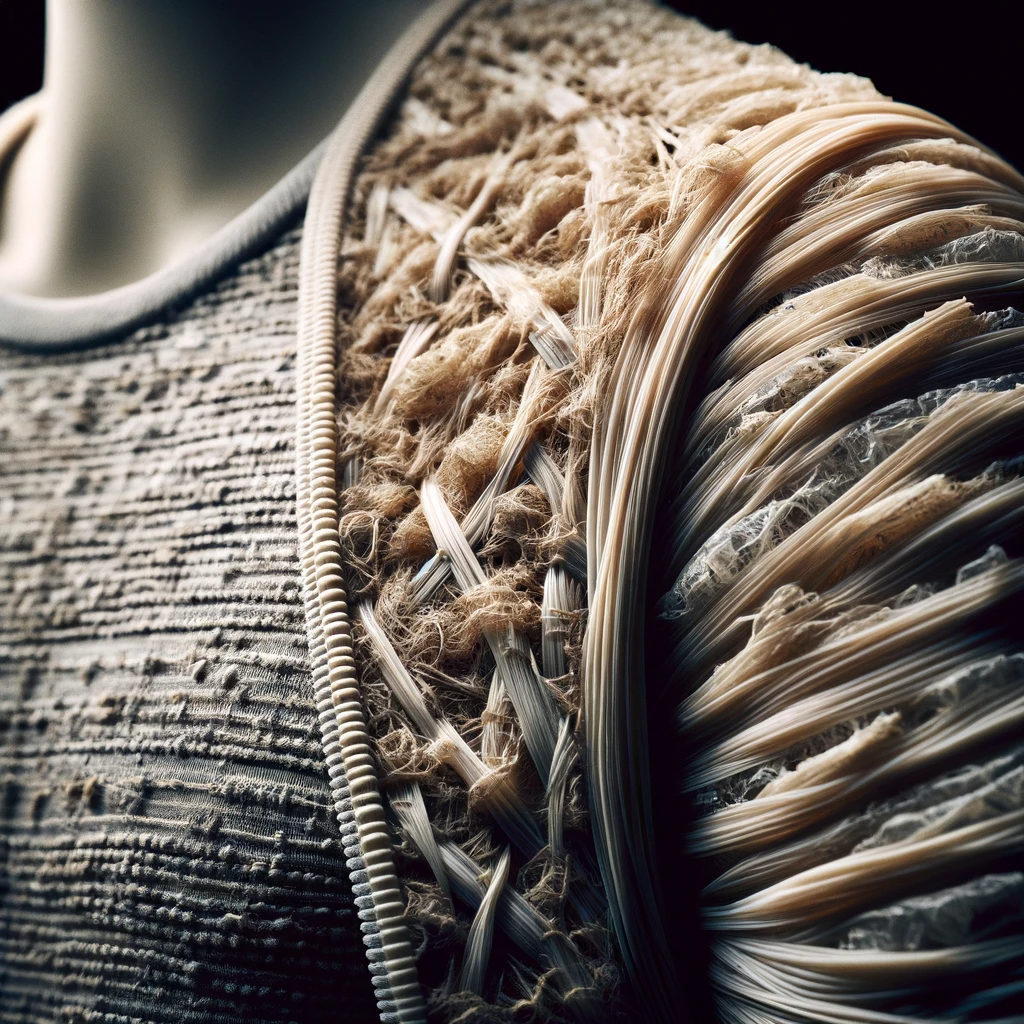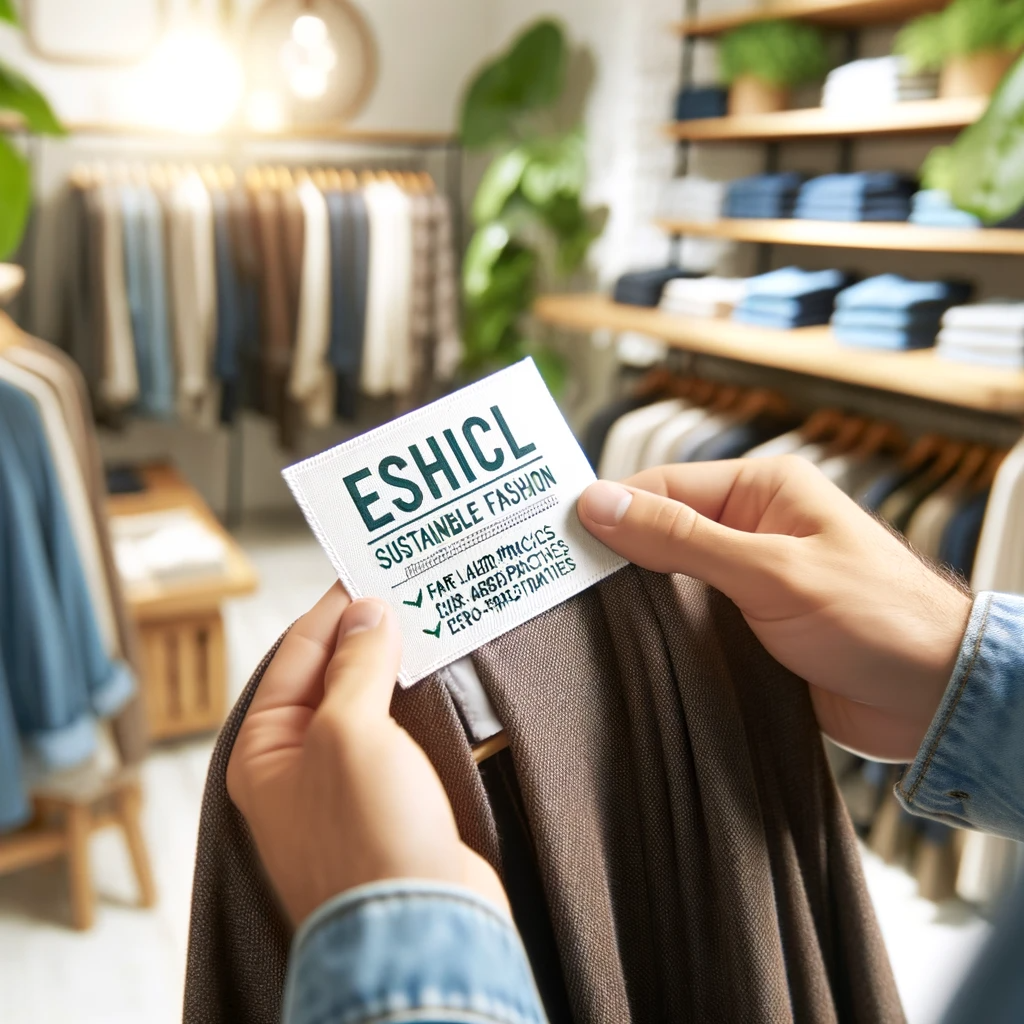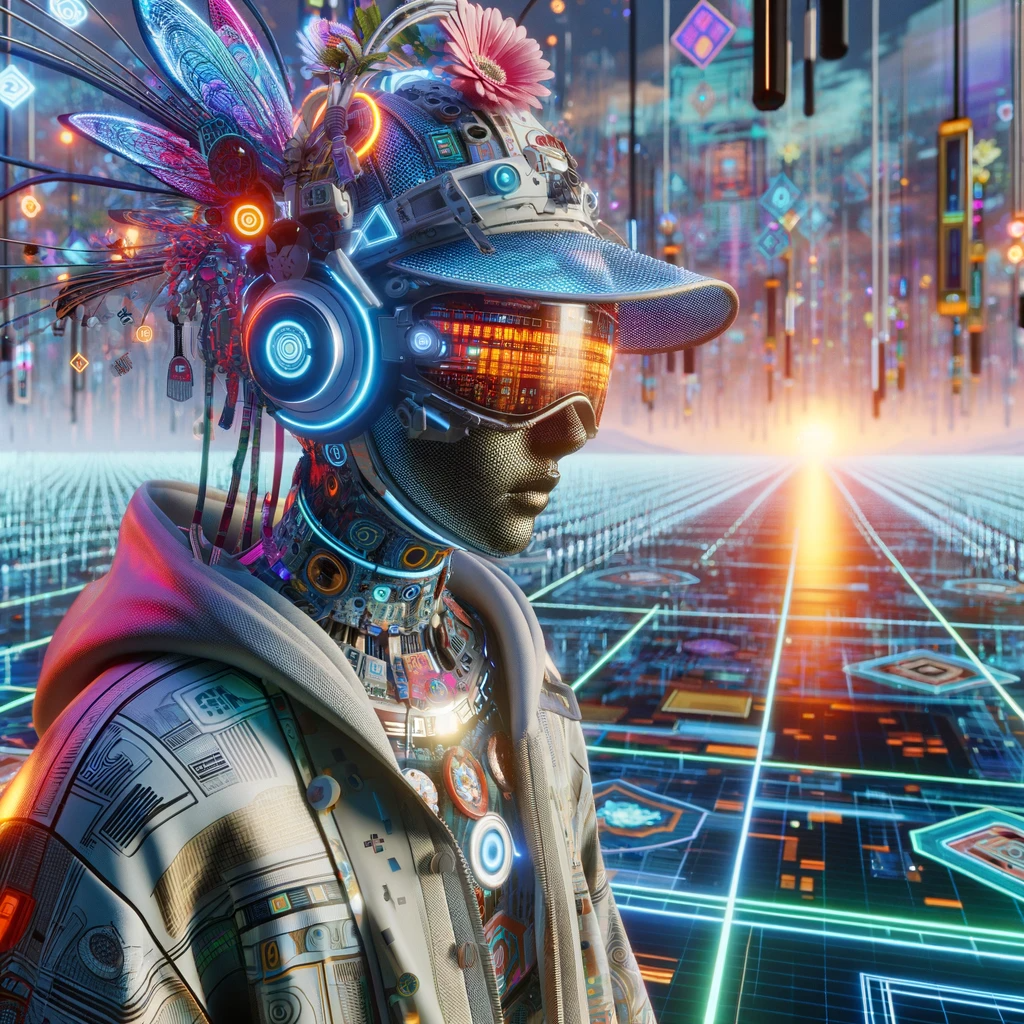CHRIS JONES | JANUARY 24, 2024 | 10 MINUTE READ
2024 promises to be a vibrant tapestry woven with innovative threads in the fashion industry and its tech-savvy counterpart. From the ethical sourcing of materials to the personalised experiences powered by AI, several key developments are poised to reshape how we create, wear, and experience fashion. We all have opinions on what will ‘pop’ this year, and the crystal ball can get a little blurry. So, I’ve assembled a more comprehensive view of opinions from across the industry; grab your metaphorical needle and thread, and let's delve into what a cross-section of our industry believes are the top 10 trends that will define the sartorial landscape in the year ahead:
1. Fashion Reimagines Its Fabric: Stitching Towards Circularity 2.0
Consumers are demanding change, and the fashion industry is listening. Sustainability is no longer a buzzword; it's a necessity. Fashion Circularity 2.0 takes centre stage this year, poised to revolutionise everything from design concepts to material choices and product end-of-life management. Buckle up because the runway will be redesigned as a closed loop!
Circularity 2.0: A Stitch in the Right Direction
Forget linear "take-make-dispose" fashion. Circularity 2.0 embraces a closed-loop system, where garments are designed for disassembly and reuse. This means:
Regenerative Materials: Fabrics crafted from bio-based or recycled materials will rise, minimising reliance on virgin resources and reducing landfill waste. Imagine hemp T-shirts that biodegrade naturally, jackets created from plastic bottles, or swimwear spun from recycled fishing nets.
Design for Disassembly: Clothes will be built with reusability and multi-use in mind. Easy access zippers, modular components, and standardised connections will facilitate disassembly and repurposing. Think jackets with detachable linings or pants that convert into shorts.
Digital Product Passports: Imagine every garment having a digital birth certificate! Blockchain technology can track materials, production processes, and ownership, ensuring transparency and ethical sourcing. No more wondering where your clothes came from!

Innovative fabrics like bio-based and recycled materials are transforming the fashion industry towards sustainability: powered by DALL.E
The EU Pushes the Pedal
The upcoming EU Sustainability legislation is adding power to Circularity 2.0. By 2030, brands will be required to:
Reduce textile waste: Extending garment lifespans, promoting repair and reuse, and exploring biodegradable alternatives.
Increase recycled content: Virgin resource dependence must decrease. Expect a surge in innovative fabrics from recycled plastics, agricultural waste, and ocean debris. Even Elastane is getting a recyclable substitute.
Transparency, Traceability, and Accountability: Every step will be documented and open to scrutiny from the farm to the fashion floor. Consumers will have the power to make informed choices based on verified data.
It's Not Just About Materials
Circularity 2.0 extends beyond fabrics. It reimagines how clothes are used, managed, and traded:
Rental and Subscription Models: Access over ownership will gain traction. ‘Fashion as a service’ (FaaS?) platforms will offer curated wardrobes for specific occasions or periods, reducing garment overproduction and extending lifespans.
Second-hand and Upcycling Boom: The provenance is no longer in doubt; farm to fashion floor to previous owners. Owners could add their ownership to the life story of the garment, adding value for further sell-on. Platforms like ThredUp and Poshmark will thrive, offering pre-loved gems and creative upcycling options. Expect vintage stores to become mainstream hubs for unique finds and sustainable style.
Local Production and Repair Networks: Supporting local designers and tailors will be encouraged. This incentivises ethical practices, reduces transportation emissions, and fosters community resilience.
The path towards Fashion Circularity 2.0 isn't without challenges, but the rewards are significant. This isn't just about saving the planet; it's about reinventing the fashion industry into a closed-loop ecosystem of creativity, conscious consumption, and shared responsibility. So, grab your needle and thread, and let's weave a more sustainable future, one stitch at a time!
Remember, this is just a glimpse into the exciting world of Fashion Circularity 2.0. This could be the year that Circular Fashion hits the mainstream, so stay tuned for further developments, innovations, and opportunities to participate in this transformative journey!
2. AI Tailors the Shopping Experience
Everyone is talking about it! Artificial intelligence (AI) is also revolutionising the fashion experience. From personalised recommendations to virtual try-on technologies, AI creates a more tailored and engaging journey for shoppers. Look for:
Smart Shopping Assistants: AI-powered chatbots on your phone can analyse your preferences and suggest items that genuinely suit your style. Think of it as having a virtual stylist at your fingertips.
Virtual Fitting Rooms: AR and VR technologies are making it possible to try on clothes virtually, eliminating the need for physical fitting rooms. This saves time and caters to shoppers with limited mobility or remote locations.
Customisable Designs: AI can personalise existing designs or generate entirely new ones based on individual preferences. Imagine co-creating your dream outfit with the help of intelligent algorithms!
3. Embracing Diversity Strengthens the Fabric of Fashion
The fashion industry is finally embracing diversity and inclusivity beyond narrow beauty standards. This translates into:
A Wider Range of Body Shapes and Sizes: Brands are expanding their sizing options to cater to all body types, ensuring everyone feels represented and confident in their clothing choices.
Representation Beyond the Runway: Models of diverse ethnicities, genders, and abilities are gracing catwalks and campaigns, challenging stereotypical beauty norms and celebrating individuality. Despite 2023 demonstrating how far fashion must go to become more inclusive, 2024 may bring lasting change.
Accessible Fashion: Designers are creating clothing that caters to people with disabilities, ensuring everyone can participate in the fashion world.
4. Technology Enhances the Retail Tapestry
Physical stores are evolving into interactive and immersive spaces, blending the online and offline worlds. We can expect:
Interactive Displays: Using touch screens, AR/VR experiences, and other interactive elements, stores can engage shoppers and bring products to life.
Personalised In-Store Experiences: AI-powered systems can recognise returning customers and offer personalised recommendations or loyalty rewards. Connected stores and continuous commerce are shifting focus from transactions to seamless interactions.
Seamless Omnichannel Experience: Blending online and offline shopping is crucial. Shoppers should be able to browse online, reserve items in-store, and easily return or exchange purchases across channels. Many brands still offer a multichannel experience, where teams, data, and tools are siloed from one another. 2024 could bring more brand transformations to enable a customer-centric omnichannel experience, where all channels are genuinely connected with centralised teams, data, and tools, and the customer can continue their journey within and between channels.
5. The Conscious Consumer Threads Ethical Choices
Consumers are becoming increasingly aware of the social and environmental impact of their choices. This translates into a demand for:
Fair Labor Practices: Consumers are choosing brands that treat their workers ethically and pay fair wages. Transparency in supply chains will be vital.
Ethical Sourcing: Choosing materials and production processes that minimise harm to the environment and local communities will be a crucial consideration.
Supporting Independent Designers and Small Businesses: Consumers seek unique and ethically made products, driving support for smaller brands and local artisans.

Consumers are demanding ethical and sustainable practices, supporting brands that prioritise fair labour and environmental responsibility: powered by DALL.E
6. From Fast Fashion to Slow Fashion: Weaving a More Sustainable Future
As consumers become increasingly aware of fast fashion's environmental and ethical consequences, a conscious shift is underway towards slow fashion. This isn't just about wearing clothes for longer; it's a broader movement advocating for mindful consumption, ethical production practices, and quality over quantity. Let's unravel the threads of this evolving trend and see how it will reshape the fashion landscape in 2024:
A Stitch Towards Durability and Longevity
Moving away from the fleeting trends of fast fashion, consumers are prioritising durable and timeless pieces that will remain stylish for years. Think classic silhouettes like crisp white shirts, tailored jackets, and well-cut jeans crafted from premium materials like organic cotton, linen, and wool. Expect to see:
Investment in craftsmanship: Brands embracing traditional techniques and prioritising quality construction will gain traction. Read: Unveiling the Intricate Tapestry.
Focus on timeless designs: Clothes that transcend fleeting trends and offer lasting style will take centre stage. Think ‘heirloom’ pieces rather than the latest trends.
Shift towards natural materials: Durable and comfortable fabrics like organic cotton, linen, and wool will replace synthetic options.

Slow fashion emphasises quality over quantity, promoting mindful consumption and durable garments: powered by DALL.E
Repair and Upcycling Give Clothes a Second Wind
Instead of discarding worn-out garments, consumers embrace repair and upcycling to extend their lifespan and reduce waste. This fosters creativity and gives old clothes a new lease on life. Look for:
The rise of repair services: Tailors and skilled sewists will be in high demand, helping mend torn items and restore them to their former glory.
A surge in upcycling projects: Creative individuals will transform old clothes into new and unique pieces, giving them a second chance to shine.
Brands embracing repair and upcycling: Some forward-thinking companies are incorporating repair services into their business models, while others are creating collections from upcycled materials.
Slow Fashion Philosophy Takes Root
The movement for ethical and sustainable practices within the fashion industry is gaining momentum. Consumers are demanding greater transparency in supply chains, advocating for fair labour practices, and supporting brands committed to responsible sourcing and production. This means:
Transparency in supply chains: Brands must provide information about the origin of materials, working conditions, and environmental impact.
Support for ethical brands: Consumers will reward brands prioritising fair labour practices, responsible sourcing, and sustainable production.
Shift towards local production: Supporting local designers and manufacturers who use sustainable practices will become increasingly popular.
The transition from fast fashion to slow fashion is a journey, not a destination, and is closely linked to Fashion Circularity. While consumers can make conscious choices by repairing, upcycling, and buying second-hand, the onus is also on brands to embrace ethical and sustainable practices, prioritise quality over quantity, and build transparent supply chains. By weaving these threads together, the fashion industry can work towards a more mindful and responsible future where style and sustainability go hand in hand.
7. Data: The New Muse of Fashion Design
Fashion is no longer just about aesthetics; it's also about data. Fashion tech software vendors are developing tools that help brands and designers make informed decisions based on real-time consumer insights. These tools can analyse:
Generative AI: AI has been mentioned earlier in the top ten, and this technology will supercharge the insights available across the areas listed below. However, even the best AI tool is useless without quality data. Did you know that AI can have Hallucinations? This is the name given to incorrect insights generated from poor-quality data.
Trends and preferences: By analysing social media data, search trends, trend services, and customer feedback, brands can identify up-and-coming styles and cater to specific consumer preferences.
Sales performance: Tracking sales data can help brands optimise their product offerings and pricing strategies.
Supply chain efficiency: Data-driven tools can help streamline production processes and reduce waste.

Data-driven tools are helping designers make informed decisions and understand consumer preferences: powered by DALL.E
8. The Rise of Resale and Rentals
Consumers are increasingly embracing circular fashion models like resale and rentals. This extends the life of garments and reduces the fashion industry's environmental impact. Expect to see:
Second-hand shopping finds its footing: Pre-loved clothing is no longer relegated to dusty thrift stores. Online platforms and curated physical stores are making second-hand shopping accessible and trendy, offering an eco-friendly alternative to fast fashion. Expect to see:
Growth of resale platforms: Established players like ThredUp and Poshmark will continue to thrive, while niche platforms catering to specific styles or demographics will emerge.
Booming vintage stores: Curated vintage shops offering one-of-a-kind pieces will remain popular, attracting customers seeking unique finds and sustainable options.
Brands partnering with resale platforms: Some forward-thinking brands are collaborating with resale platforms to give their own garments a second life.
Subscription-Based Clothing Rentals: Services like Rent the Runway and Le Tote will give consumers access to a curated wardrobe without the burden of ownership.
9. The Metaverse Merges with Fashion
The burgeoning Metaverse promises to revolutionise the way we experience fashion. This immersive virtual world presents opportunities for:
Digital-Only Fashion: Brands can create virtual clothing items and accessories that avatars can wear in the Metaverse and video games.
Interactive Brand Experiences: Fashion brands can host virtual events, showrooms, and even fashion shows within the Metaverse, and video game platforms.
New Revenue Streams: Brands can monetise their Metaverse and video game presence through virtual item sales and brand partnerships.

The Metaverse presents new opportunities for fashion with virtual items and immersive brand experiences: powered by DALL.E
10. Fashion Tech Empowers Customisation
Technology is making it possible for consumers to have a greater say in how their clothes are made. Customisation is no longer just about monogramming; expect to see:
Made-to-Order Clothing: Services like Orchard Mile and Unspun allow consumers to customise everything from fabrics and colours to cuts and fits.
Digital Printing: Printing solutions from companies like Kornit enable printing on demand, with much-improved timescales and efficiency of the process, textiles, water, and dye for small production runs.
3D Printing for Fashion: 3D printing technology is making it possible to create personalised clothing items and accessories on demand.
Embracing the Tapestry of Change
These ten considerations paint a vibrant picture of the fashion landscape in 2024. It's a year when sustainability, technology, and ethical consciousness intertwine to create a more mindful and inclusive industry. By embracing these threads of change, the fashion industry and fashion tech can weave a future that is not only stylish but also responsible and forward-looking.
Remember, this is just a snapshot of the dynamic world of fashion. Stay curious, be open to innovation, and keep an eye on the ever-evolving trends. After all, in the ever-changing tapestry of fashion, the most important stitch is the one you create with your own style and values.
Feel free to share your thoughts and ideas on this topic in the comments below. Let's keep the conversation going! Contact me to discuss your story!
Author Chris Jones
Chris has helped global brands, retailers, and manufacturers align people, processes, and technology for over three decades, driving transformation projects to maximise business impact.
This article is also published on LinkedIn:
Top 10 Trends Shaping the Future of Fashion for 2024 (www.LinkedIn.com)


